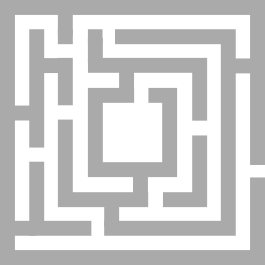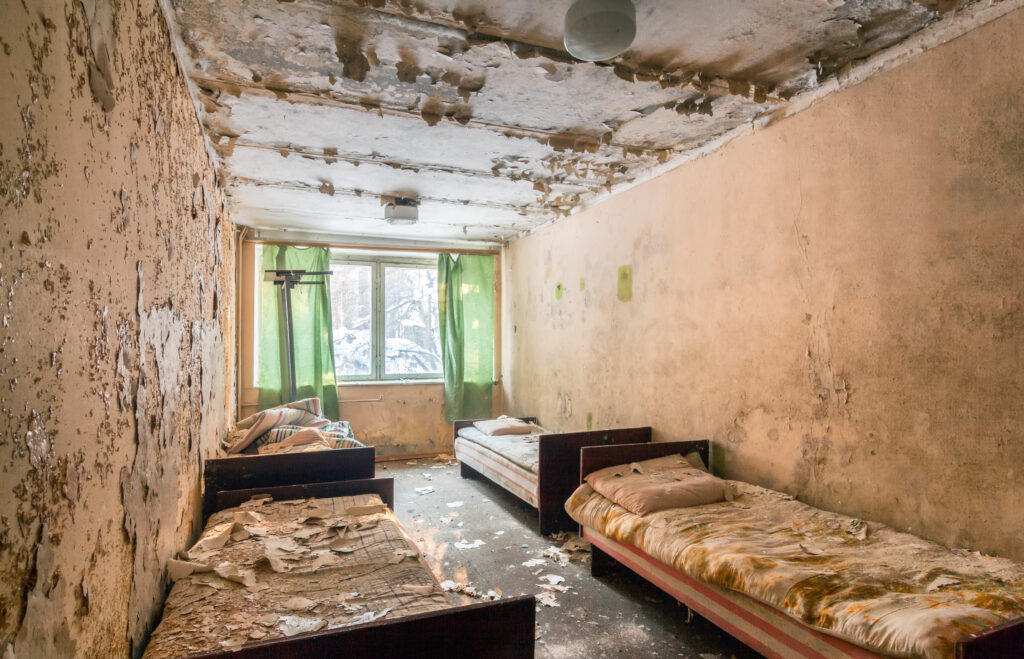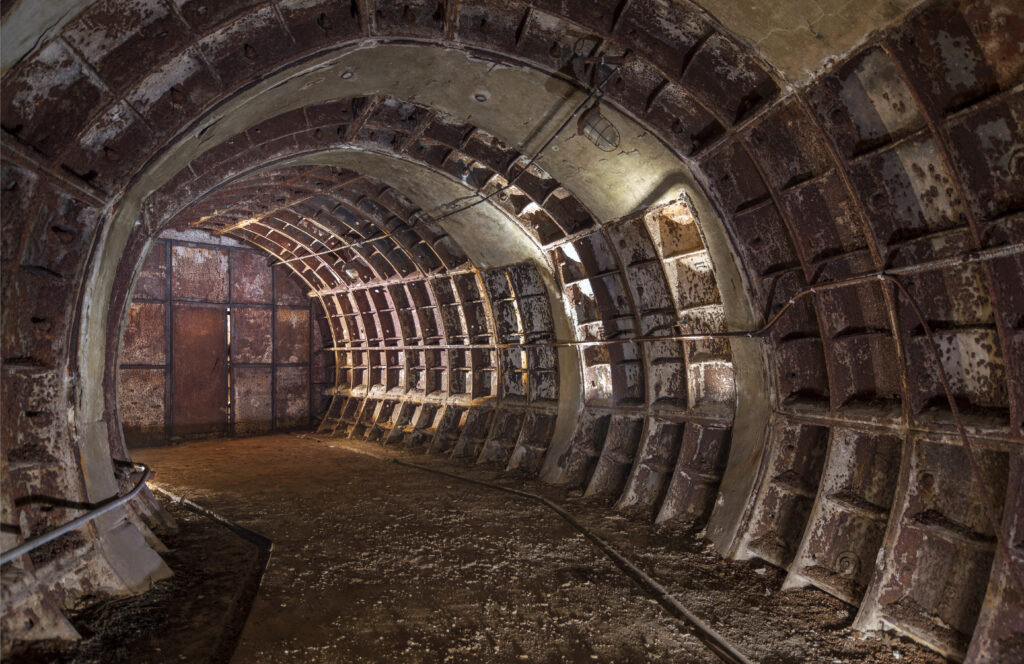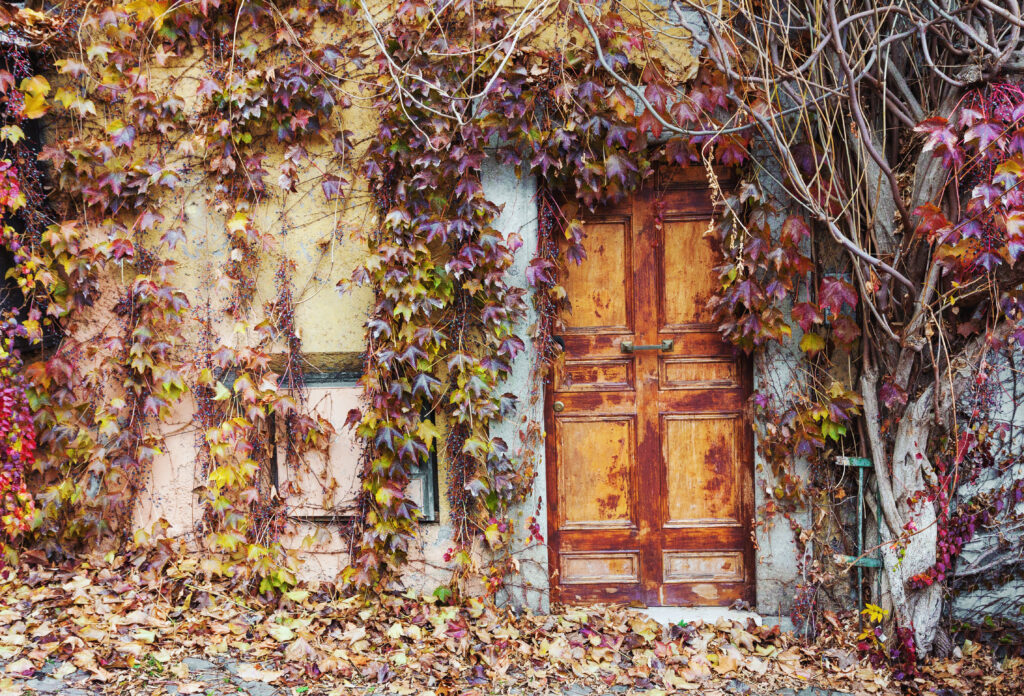Do houses think? What does a dwelling remember? And how can a House Memory come lose? This is one of the metaphysical materials you can collect in the game Control, turned into an “item” to use in your roleplaying games. Read more about the idea behind it – and the whole list – here.
How a House Memory is created
House Memories happen when houses are forgotten. Abandoned places are basically left for dead by their former inhabitants, and once a building is no longer inhabited, its presence and purpose begin to decay. This is why empty houses begin to feel otherworldly after a while.
There are two ways this process can lead to a House Memory being created, and the first is a lot more common than the latter.
Decay
When a place is left to crumble, any rooms will stop being part of the house once too much of the structure has decayed. Usually, that means the ceiling has to cave in and at least to walls need to be more hole than surface. In such a case, the house’s memory of that room has nothing left to hold onto and escapes as a House Memory.
Loss of Purpose
When a place is not just abandoned but also forgotten, it can happen that rooms simply vanish. They stop existing physically, and move on as a House Memory while everything else pointing toward their existence as an actual room slowly seeps from reality over time. Floor plans will not show the room that disappeared within a few weeks. Pictures and drawings depicting the house will change to show it as if that room was never there to begin with. Even room numbers shift and morph to explain away what is gone now.
Finding a House Memory
House Memories tend to drift toward buildings and structures that are in the process of being abandoned. Anything that used house a large number of people but now only provides a home to a few. Empty hallways, way too long for their current purpose, are a prime destination for wandering House Memories. There, they tend to mimic the movement of the former inhabitants for a while before they settle down in a corner like wind-driven refuse.
Transporting a House Memory
While they are naturally drawn to almost abandoned structures because they resemble their origins most closely, they are unable to resist something new and freshly furnished that is obviously waiting to be lived in. They cannot resist a semi-decent doll house.
A well crafted miniature accommodation, as small as the palm of a hand, will lure a nearby House Memory in with the promise of a second chance at being part of people’s lives. At least temporarily – for a couple of weeks – the House Memory will rest comfortably inside the miniature rooms, and can be transported pretty easily as long as it is not being carried through other buildings – unless they are meant to be used.
Utilizing a House Memory
Once a House Memory is taken into another building, it will grow restless and leave its temporary container. If the building has been abandoned, it will merely wander its corridors as it used to before. But if the building is lived in, the memory will start searching for a place to latch onto – usually a wall, sometimes a ceiling – to manifest itself.
A new door – or a hatch – will appear within a few days. Once it has fully formed, it can be opened to a full and solid room behind it, no matter the actual physics of the house. If the House Memory is fairly fresh, the room will resemble the one that vanished to form the memory. If it has decayed over time, it will lose more and more of what made it unique, up to the point of a nondescript, blank room without any decoration.
As long as it is being used every day, the room will stick around, and things can be brought into it like any other room. If it is left on its own for too long, though, it will vanish much quicker than any normal room would, returning to being a memory and behaving as one.
Advanced Use Cases
On top of enhancing the usable space within a given set of walls, there is another way to use House Memories. After being added to a dwelling as described above, the room is used as storage for valuable, rare, or dangerous things. Then, it is locked and ignored for a few days. It also helps if as few people as possible ever knew about the room.
Once the House Memory detaches, it will find itself attracted to a doll house placed nearby, possibly hidden from view. If the container has been crafted well enough, it will stay there for weeks, and can be restored to a room with relative ease. In the meantime, everything inside is safe. The room needs to be reconnected every couple of months to prevent the treasures therein from decaying (Adventure Hook?).
Remember your House Feedback!
Compared to the Remote Thought, this concept does not sound as useful. But it can be, given the right circumstances, especially if the group has a lair to beef up – or enemies that use Memory Rooms to hide their secrets. Or maybe the clues to solve a mystery are hidden in a room that has, for some reason, vanished from the scene of the crime? (Yes, Adventure Hook!)
If you are interested in more Control concepts, check out the Control Materials. If you are more into making things, there’s a similar thing for concept props on my other site.
Thanks for stopping by, and remember to Be Inspired!






